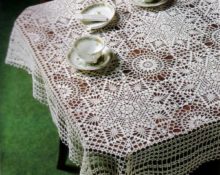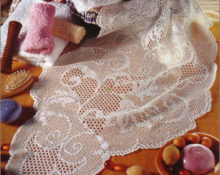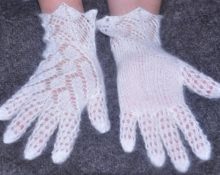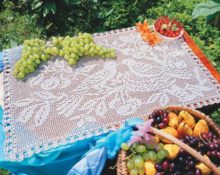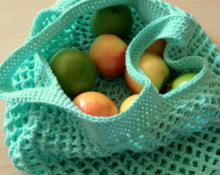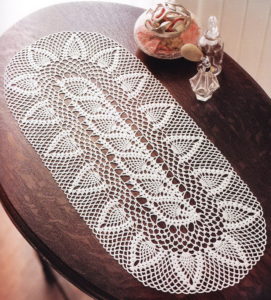 Things you create with your own hands, be it figurines made of polymer clay, flowers made of foamiran or tablecloths crocheted, are valued much more than similar conveyor products sold in stores selling various household utensils. In most cases, the assortment of such shops, although pleasing with variety, cannot boast of particular quality, and tablecloths or napkins purchased there for decorating the kitchen table completely lose their appearance after several washes.
Things you create with your own hands, be it figurines made of polymer clay, flowers made of foamiran or tablecloths crocheted, are valued much more than similar conveyor products sold in stores selling various household utensils. In most cases, the assortment of such shops, although pleasing with variety, cannot boast of particular quality, and tablecloths or napkins purchased there for decorating the kitchen table completely lose their appearance after several washes.
Of course, there are manufacturers who create truly exclusive items that will look like new even after several years of constant use. The only disadvantage of buying such textile products is the incredible price of even the simplest and most unpretentious-looking tablecloth. That is why, if you have the opportunity and certain skills, it is better to create kitchen textiles yourself.
Recommendations for knitting an oval tablecloth
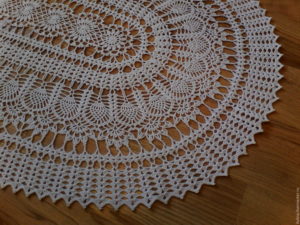
Before you start working, you need to decide exactly what shape the tablecloth will decorate in the future. Often standard tables come in square, round, rectangular and oval shapes. Of course, you can decorate a square table with an oval tablecloth, but the entire festive and solemn look will be lost. If the place on which the product will be placed is an oval table, then the knitting patterns need to be selected specifically for it.
The next stage of preparatory work is the selection of suitable threads. Traditionally, tablecloths of this type are knitted from cotton threads, which hold the shape of the finished product well and are not afraid of frequent washing. The color of the yarn can be white, blue or beige - it all depends on taste, other elements of the decor of the kitchen or dining room, or simply the mood of the needlewoman who decided to try her hand at creating a crocheted tablecloth for an oval table.
Advice! To decorate the kitchen table, it is better to choose white threads. For small coffee or serving tables, you can choose brighter options.
After choosing the appropriate threads, you need to stock up on the most important working tool - a crochet hook. Hooks are distinguished by numbers and materials from which they are made.
Important! The most successful options are steel hooks. They are strong, durable, do not stain the yarn and do not become electrified.
You can figure out what size hook you need by manual selection or by the length of the thread per 100 g. The thread consumption will also depend on the size of the hook. If on average a large tablecloth requires about a kilogram of yarn, if you choose a hook of a larger diameter, the volume of threads can increase several times.
Important! It should be remembered that tightly knitted fabrics using a small hook hold their shape well. A loose knit will not be as strict and will stretch more.
How to crochet a tablecloth on an oval table: description and diagrams
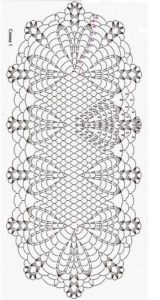
Crocheting requires the presence of some kind of pattern on the fabric. The simplest and most common pattern for tablecloths, napkins or kitchen curtains is considered to be “pineapple”. There are many variations of this beautiful and interesting pattern; there are no specific requirements for its implementation. The main thing is that the final pattern resembles this exotic fruit in shape.
To knit a tablecloth with a pineapple pattern you will need:
- cotton yarn – 1 kg;
- fabric markers;
- hook number 1, 75.
Check out the detailed description of the work progress:
- Knitting an oval tablecloth begins with its central part. The first 100 chain stitches are picked up with a crochet hook.
- Make 4 lifting air loops to move to a new row and begin to knit a bias mesh according to pattern No. 1.
- The row is closed with a joint column knitted into the first air loop of the cast-on edge.

- The next stages of knitting are performed according to pattern No. 1, on which the knitting direction is indicated by arrows.
- Looking at Figure 1, the knitting is divided into side and central parts, and markers are installed.
- Guided by scheme No. 2, a pattern is knitted, the repeats of which are shifted in a “chessboard” pattern relative to each other.
- Guided by diagram No. 3, the sides are knitted.
- Repeat the height from rows 10 to 28 four times and close the knitting.
Advice! The finished tablecloth is washed by hand and dried on a hard horizontal surface. To better keep the product in shape, you can starch it.
In addition to “pineapples,” a product with a floral pattern in the middle and a border on the sides will look great on an oval dining table. The product will look original and interesting if the border is made of white threads and the central part is blue.
To work you will need:
- blue cotton threads – 350 g;
- white cotton threads – 150 g;
- hook number 1.5.
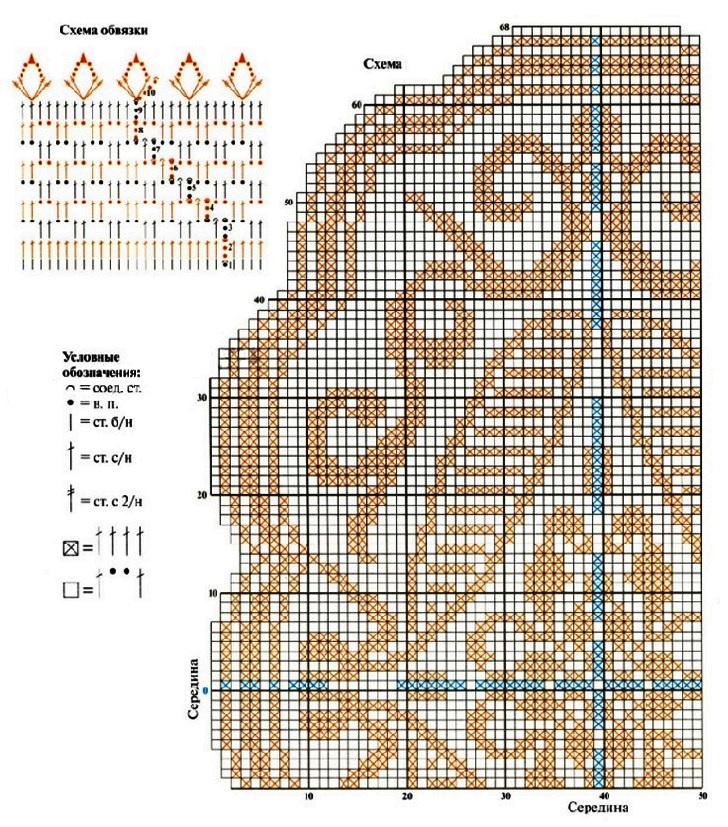 Step-by-step description of the work:
Step-by-step description of the work:
- Knitting is done according to the pattern.
- You need to start by casting on 243 air loops with blue threads, of which 238 are the main ones, and the rest are for lifting.
- First row - one double crochet is inserted into every ninth chain stitch.
- Then 79 fillet knitting cells are knitted.
- The following rows are knitted in forward and reverse directions using the fillet technique up to row 67.
- Work on the border begins by attaching a white thread.
- It is used to knit a border around the entire perimeter of the product.
- 10 rows are knitted with white thread, each of which is completed with a connecting stitch.
Crocheted oval tablecloths from foreign magazines: step-by-step instructions
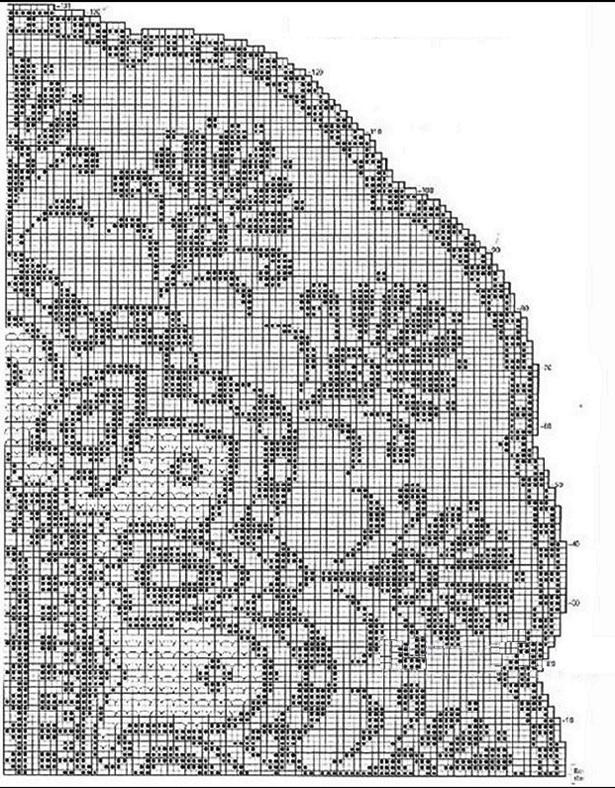
Foreign crochet magazines contain a huge number of patterns for beautiful tablecloths. The only drawback of such visual guides is that for those who do not speak Polish, English or Chinese, it is almost impossible to knit any product.
More experienced needlewomen who are familiar with patterns can, by looking at the images shown in magazines, knit something more or less similar. It is better for beginners to learn from manuals in Russian.
The most popular patterns that are published in foreign magazines are products knitted using the fillet technique. The “loin” looks best in cotton crocheted No. 1, 25.
Step by step description:
- Work begins according to the scheme from the middle to the edges.
- The diagram shows only the fourth part; the remaining elements must be knitted in a mirror image.
- The length of the product can be increased by adding repeats.
Options for decorating an oval tablecloth
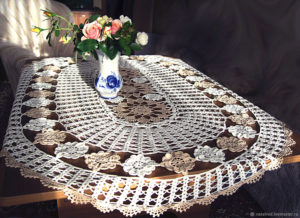
Tablecloths made from individual elements sewn together look most impressive. Such models do not require additional decoration or decoration. The disadvantage of such models is that it is no longer possible to unravel and tie them. Knitting from elements allows you to combine several techniques and patterns in one product.
A tablecloth knitted in one piece can be decorated with:
- smooth or voluminous embroidery;
- knitted elements sewn along the edges or in the central part of the tablecloth (butterflies, flowers);
- beads from which you can lay out a pattern or sew them in a chaotic manner;
- satin ribbon running along the edge of the tablecloth.
Beginners who are not yet confident in their abilities can practice knitting napkins. Made using the same technique, they can become either separate decorative elements or complement ready-made tablecloths and other textiles.


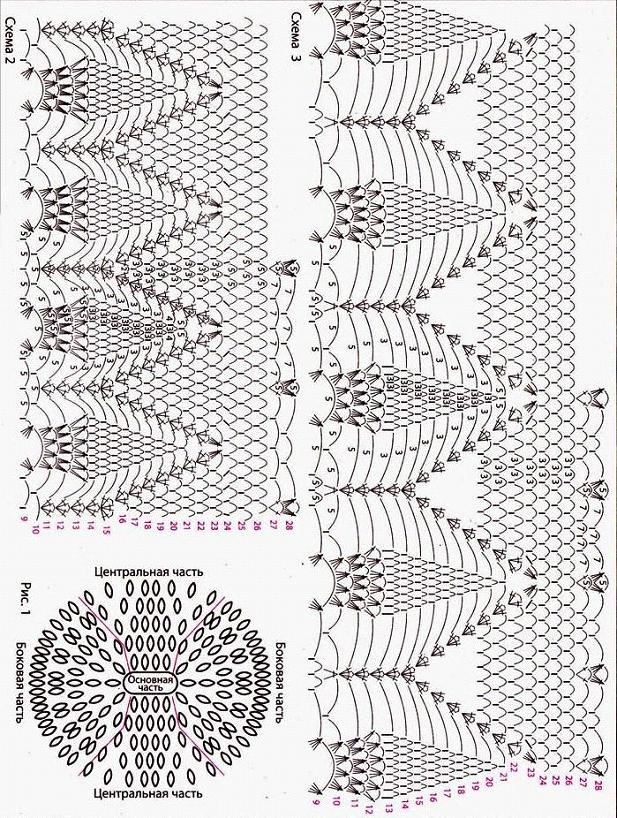
 1
1